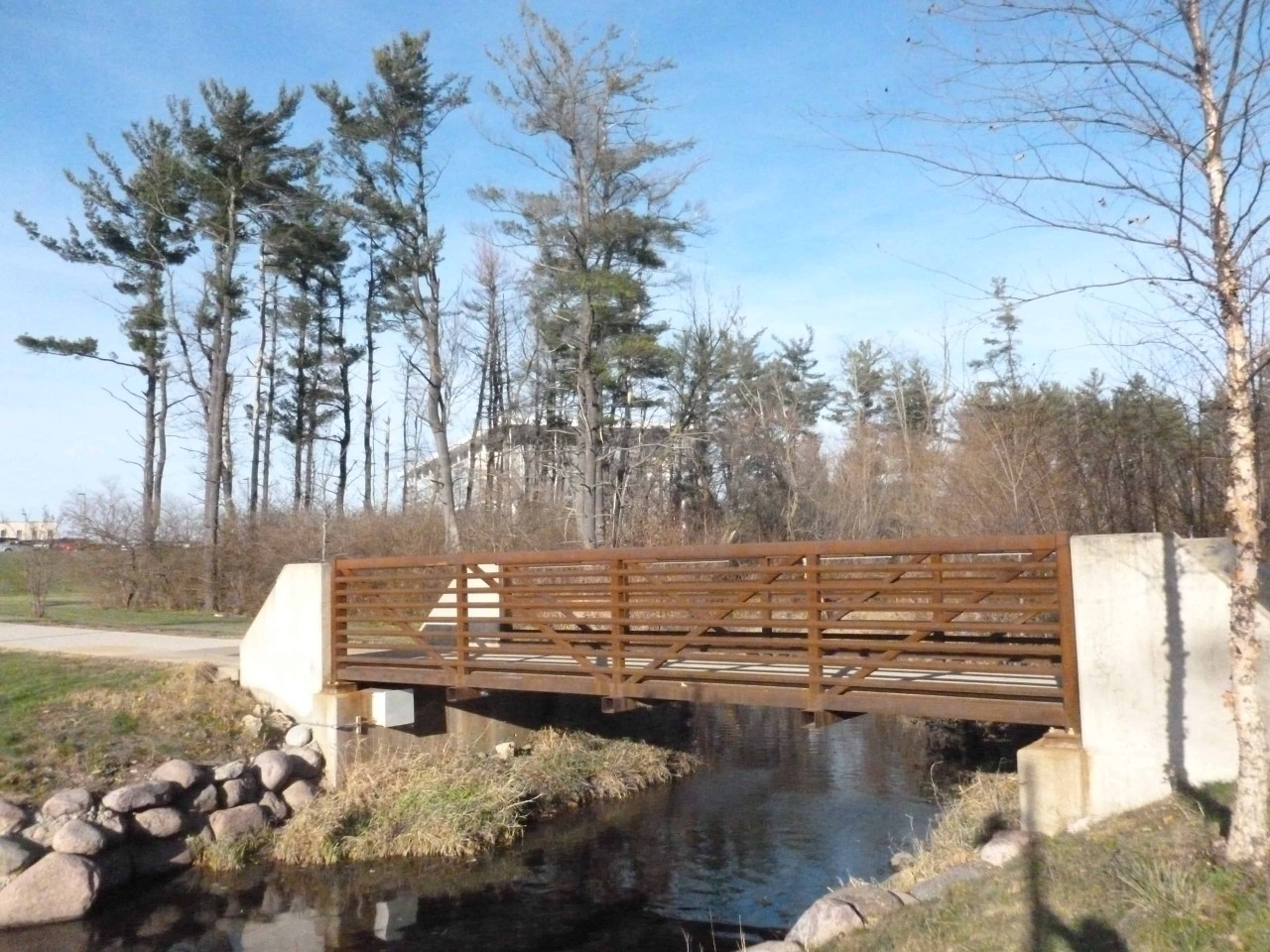Mastering pedestrian bridge design: A guide to safety, aesthetics and sustainability
A pedestrian bridge should be designed with careful consideration of safety and convenience. Engineers creating pedestrian bridge designs should begin by identifying project objectives and constraints. Engineers should also consider construction and maintenance requirements, permitting, railing and fencing requirements, lightning, drainage and costs. The following table highlights the crucial steps involved in developing pedestrian bridge designs.
Pedestrian bridge design considerations
Pedestrian bridge design standards in the U.S. commonly include the American Association of Highway and Transportation Officials (AASHTO) Standard Specifications for Highway Bridges and the AASHTO Load and Resistance Factor Design Guide Specifications for the Design of Pedestrian Bridges. While prioritizing compliance with code requirements, pedestrian bridge designs should also meet performance standards, aesthetic goals and maintenance requirements.
Let's look at some critical aspects community leaders and engineers should consider when developing pedestrian bridge designs.
Location
The location of a bridge determines its effectiveness. A pedestrian bridge in an urbanized area should provide a safe pathway over roadways, railroads and watercourses while maintaining a direct path to not increase commute times. The designer should eliminate as many elements as possible that may dissuade pedestrians from using the bridge. The perceived safety benefit and ease of use will influence the bridge's pedestrian traffic. Bridge locations in rural or park settings have different location selection criteria, often based on infrastructure (such as trailheads or path connectivity), natural or scenic features, or environmental constraints. The anticipated volume, user demographics and natural environment are criteria that will determine the possible locations to be considered by the design professional.
Safety and accessibility
A pedestrian bridge should comply with AASHTO pedestrian guide specifications and Americans with Disabilities Act (ADA) guidelines. The following are some critical specifications that pedestrian bridge designs should comply with.
- Geometry and clearances.
-
Width: Bridge deck width should be based on the anticipated usage and ADA standards for Accessible Design guidelines. Clear width is calculated from face to face of rails. If passing spaces are used, they should adhere to ADA requirements and be located at regular intervals, not exceeding 200 feet.
-
Grade: Maximum grades on approach ramps should adhere to ADA requirements. Landings should be level, the full width of a bridge and a minimum of 5 feet in length.
-
Clearances: Maintain adequate vertical separation and clearances from highways, railroad and watercourses. Clearances vary greatly depending upon the site-specific criteria.
-
Loads and deflections.
-
Live loads: Though a typical pedestrian bridge is designed to carry pedestrians, bicyclists and light maintenance vehicles, it might be used to carry emergency vehicles and construction live loads under certain circumstances. Notably, no vehicle live load is required for bridges with clear widths equal to or less than 7 feet.
-
Fracture critical designation.
-
Fracture Critical Members (FCMs) are the tension components of bending members whose failure might result in the collapse of a pedestrian bridge.
-
FCMs and welds should be identified on structural plans and shop drawings.
-
Railing and fencing requirements.
-
Handrails should be provided for all stairs and ramps with grades more than 5%.
-
When required, handrails should be placed at a height 34-38 inches above the finished grade.
-
All pedestrian bridges that cross roads or railway tracks should be provided with chain link fabric fences or other approved fencing.
-
Covered/enclosed structures.
-
In the case of covered bridges, the enclosure's roof should be designed according to all loads and load cases, including the uplift wind forces.
-
Applicable codes such as IBC and ASCE 7 should be considered for designing enclosed structures for covered bridges.
-
Deck.
-
Any available deck types, except steel grid, can be used to design a pedestrian bridge deck.
-
All pedestrian bridge decks should have nonskid surfaces.
-
Lighting.
-
Lighting requirements should be determined by the length and location of the pedestrian bridge and concerns about pedestrian safety.
-
Lighting should be energy-efficient and cause minimal impact on the surrounding natural environment.
-
Drainage.
-
The pedestrian bridge deck should be kept watertight by placing deck drains at required intervals.
-
Curbs should be installed on both sides of the pedestrian bridges crossing roads and highways to prevent water from running over the sides.
General design
- Bridge system type. Pedestrian bridges are usually categorized into truss, girder, arch and long-span, with truss bridges being the most popular because of their cost-effective designs.
- Span. The distance between two bridge supports or foundations is called the bridge span. Truss bridges can accommodate up to 250 feet for pedestrian bridges.
- Member components. This includes major components of a pedestrian bridge design, including pile, cap, bent, girders, decking and others.
- Camber. Camber or slope is the amount of rise at the center of the span, divided by the length of the bridge. ADA guidelines require specifying camber at 1.2% of the length.
Service life and maintenance requirements
A pedestrian bridge should have a minimum service life of 75 years. Bridges should be inspected regularly (at least once per year) to ensure user safety and structural integrity. Preventive inspection and maintenance may include cleaning, removing debris, painting, and sealing decks and joints to extend the service life of the structure.
Sustainability
Designers should also consider sustainable practices to minimize the environmental impact of the pedestrian bridge. Explore eco-friendly materials, energy-efficient lighting and landscaping options that promote sustainability. Integrating green infrastructure elements can contribute to a more environmentally conscious and aesthetically pleasing design.
Cost and funding
Pedestrian bridges tend to be the most expensive treatment for crossings, particularly those over an arterial street that require extensive ramps and elevation changes. While the cost of a pedestrian bridge is based on specific situations, it is estimated that installation might cost anywhere from $200,000 to more than $5 million. Securing funding for engineering and construction is a deciding factor in developing pedestrian bridge designs.
Partner with experts to ensure quality pedestrian bridge designs
Pedestrian bridge designs require the technical expertise of civil, environmental and structural engineers who can ensure design compliance with state-specific code requirements and bridge standards. Partnering with a team of diverse engineers who can provide guidance on a pedestrian bridge design project is essential.
At Fehr Graham, we are committed to ensuring pedestrian safety across the Midwest and beyond. From conducting traffic studies and transportation forecasting to pedestrian bridge designs, we are a one-stop solution for all your transportation projects.
To learn how Fehr Graham can help develop pedestrian bridge designs for your community, contact us or call 815.562.9087.
 |
As the firm’s Lead Transportation Engineer, Fehr Graham Principal Noah Carmichael, PE, leads notable, complex and high-profile transportation infrastructure engineering projects. He works closely with municipal and governmental partners on public infrastructure planning and identifies funding opportunities to support community capital investment goals. Reach him at |
Collaborative, Insightful, Results-Driven Solutions
Fehr Graham provides innovative engineering and environmental solutions to help improve the lives and communities of our customers.

